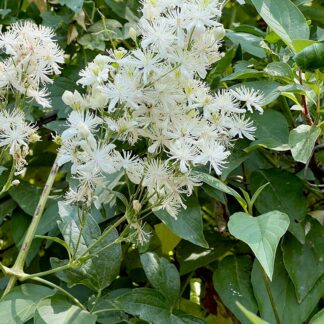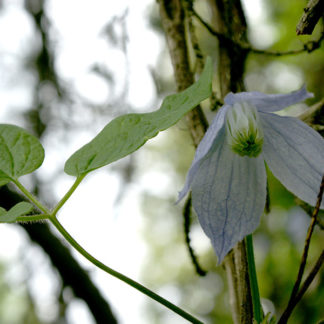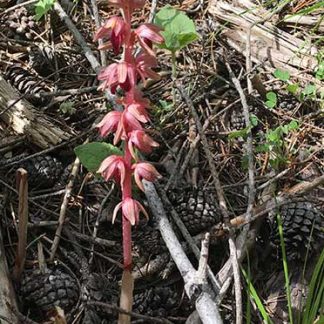native
Showing 61–72 of 282 results
-

Clematis hirsutissima / hairy clematis
- striking, purple, upside-down vase
- four hairy sepals (not actually petals) fused to make the vase
- one flower per stem
- leaves divided into narrow leaflets
- moist or seasonally moist meadows
-

Clematis ligusticifolia / western white clematis
- climbing vine... makes dense canopy
- in canyons and streamside thickets
- compound leaves with 5-15 leaflets, often widely spaced
- white flowers with 4 "petals", many pistils and stamens — late summer
- fruit is fluffy white cluster in Sept/Oct
-

Clematis occidentalis / purple clematis
- grows as a vine with hairy stems - on ground, over logs or up trees
- leaves are trifoliate
- flowers have 4 "petals" and hang down (nodding)
- thick central core of stamens and pistils
-

Collinsia parviflora / maiden blue-eyed Mary
- inconspicuous
- teeny blue and white flowers, singly or in small clusters
- reddish stems and buds more visible than the flowers
- wide variety of habitats, bare rocks to marshy fens
-

Collomia linearis / tiny trumpet
- teeny, tubular, lilac to white flowers
- flowers in clusters at top of stem in a basket of leaves
- velvety stem; long, narrow, lance-shaped leaves
-

Comandra umbellata / bastard toadflax
- teeny, funnel-shaped white-ish flowers in clusters
- small plants, thick-ish, pointy stem leaves; more oval basal leaves
- clonal - may colonize large areas
-

Corallorhiza maculata / spotted coralroot
- short, brown/red leafless flowering stalk, often in clumps
- intricate all brown/red-ish flowers except for a white lower lip, with reddish spots
- in conifer or aspen forest understory
-

Corallorhiza striata / striped coralroot
- short and purple - no green bits
- forest understory
- up to 35 flowers per stalk; often many stalks together
- flowers have 5 pointy, purple striped "petals" and one darker lower lip petal
-

Corallorhiza wisteriana / spring coralroot
- small, easily missed in the forest duff
- no leaves, no green parts
- flowers have white lips, possible spots, no eared tabs
- scape (flowering stalk) purple, or yellow, or brown
- may stay dormant for years at a time
-

Cornus sericea / red osier dogwood
- shrub with opposite branching and red bark, brightest in fall/winter
- common along streams especially
- small white flowers, 4 petals, in clusters
- white or blue-ish white berries in fall
- opposite leaves with parallel veins
-

Corydalis aurea / scrambled eggs
- prostrate herb, up to 15" tall
- moist but well-drained soils, including on roadsides
- yellow tubular flowers, with spurs
- highly dissected leaves, blue-grey except when young
- fruits are pod-like, resembling peas or beans
-

Crataegus douglasii / black hawthorn
- slightly thorny shrub or small tree, to 30 feet
- often forms thickets
- broad leaves with toothed edges, clumped at ends of branches
- clumps of white, globe-shaped flowers in spring; prominent black anthers
- clumps of black "berries" in autumn
Showing 61–72 of 282 results